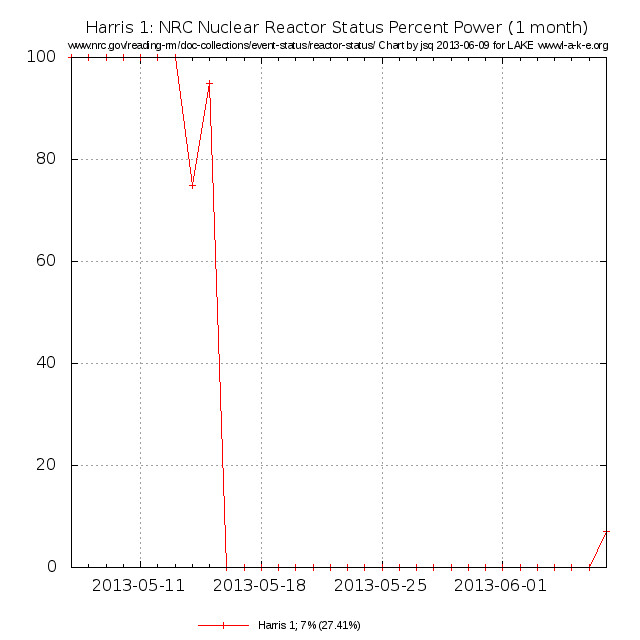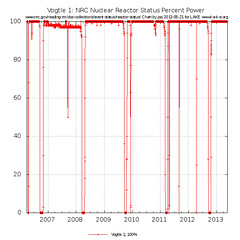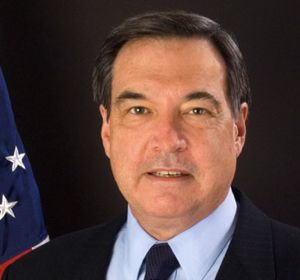Less than 500 miles from here in NC,
what else haven’t they found if
 ‘Duke Energy’s examination a year ago “was supposed to have found that problem then and fixed it”‘?
This was a ‘a quarter-inch spot the NRC and the company describe as a “flaw” in the reactor vessel head, which contains heat and pressure produced by the nuclear core’s energy.’
When a solar panel has a quarter-inch flaw, you get a tiny percentage less electricity,
not the risk of radiation leak or worse.
Would you rather have two more nukes at the same site, run by the same company that can’t run the one it’s got safely, or solar power instead?
‘Duke Energy’s examination a year ago “was supposed to have found that problem then and fixed it”‘?
This was a ‘a quarter-inch spot the NRC and the company describe as a “flaw” in the reactor vessel head, which contains heat and pressure produced by the nuclear core’s energy.’
When a solar panel has a quarter-inch flaw, you get a tiny percentage less electricity,
not the risk of radiation leak or worse.
Would you rather have two more nukes at the same site, run by the same company that can’t run the one it’s got safely, or solar power instead?
Plus where is the advantage of baseload capacity when Harris 1 has only been up 27.41% for the past month (NRC data), which is hardly better than the approximately 20% sun hours per day for solar power in North Carolina this time of year. Given the low and continually-dropping cost of solar panels, Duke could simply over-provision distributed solar panels and get way more than 20% or 27.41% effective power, and get that on budget and on time.
Emery P. Dalesio wrote for AP yesterday, Harris nuclear plant in U.S. is safe to restart after reactor problem found, Continue reading





